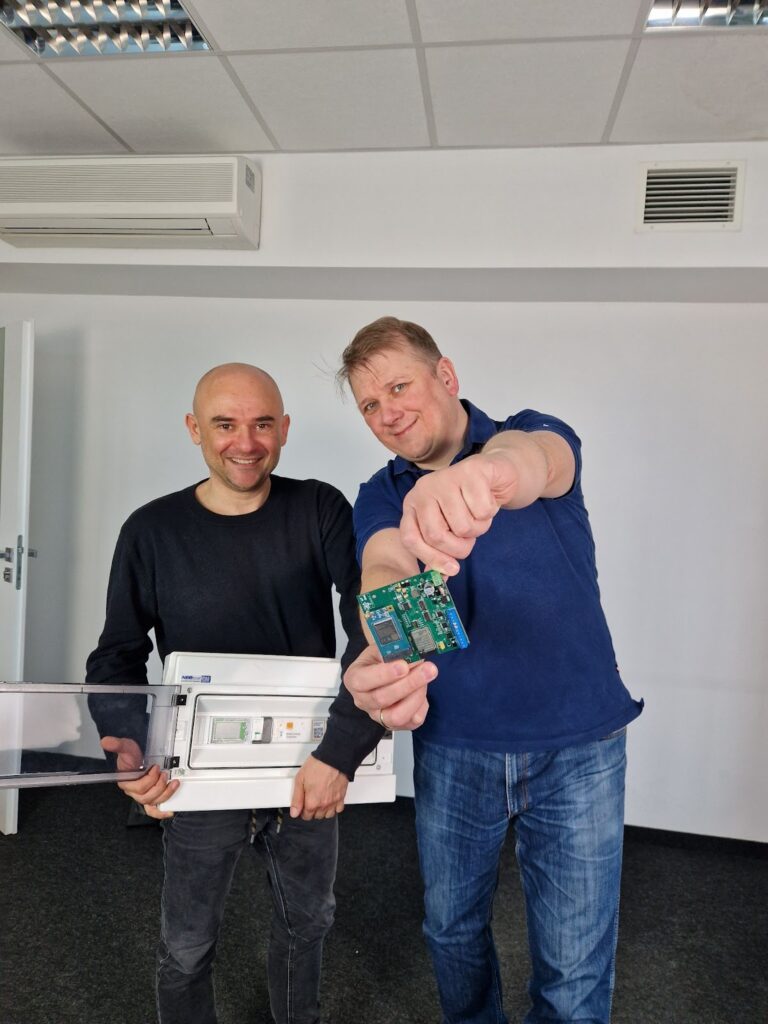Public Buildings Metering System - cost savings and better management
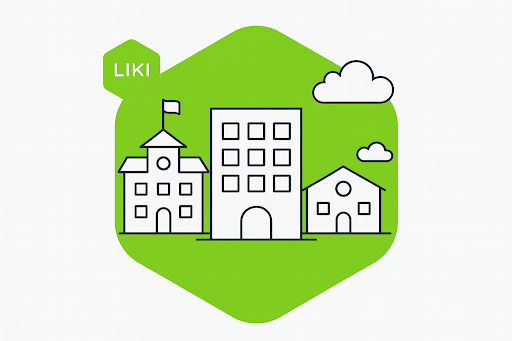
At Liki, we have developed a comprehensive metering system for public buildings, which allows you to monitor the consumption of electricity, heat, water and environmental conditions inside and outside the rooms in real time. Our solution is not a theory – it has been implemented in schools in Łódź, where it is a source of knowledge that allows for a different view of energy efficiency, the use of renewable energy sources and the comfort of everyday work of students and teachers.
Thanks to metering, schools and public institutions can not only reduce costs, but above all create better conditions for learning and working.
Pilot project
The first months of the pilot show how great the value of such an approach is. After the modernization, heat consumption in the building has decreased by more than half compared to the school before thermal modernization. Photovoltaics produced much more energy than the facility needed for current needs – which opened up an opportunity to use surpluses to further reduce the costs of heating rooms and hot water. The measurement system also made it possible to indicate places where micro-water leaks occurred – too small to be detected in standard settlements, but generating additional costs in the long term.
However, the air quality data turned out to be the most noticeable for users. In January 2025, the National Centre for Research and Development published a report informing about the level of carbon dioxide in classrooms. The NCBR reported that the concentration of carbon dioxide in most Polish schools is approaching levels that in the long run have a negative impact on concentration and comfort of learning. For the City of Łódź, the health and effectiveness of education of the youngest residents are crucial. Therefore, the measurement project also included monitoring CO2 levels in classrooms. Thanks to sensors with displays, teachers could react immediately, e.g. by ventilating the rooms during breaks. In the long term, it is a signal to directors and local governments that investments in ventilation and air filtration systems are as important as those in energy efficiency. The pilot project confirmed that metering not only documents the effects of modernization, but above all provides the knowledge needed to make schools operate even better – more economically, healthily and more consciously.
What do the measurements show?
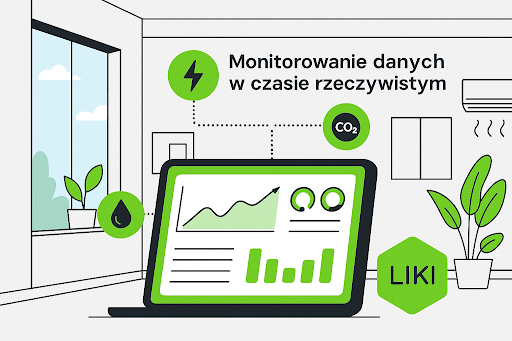
Accurate measurements of heat consumption indicate how efficiently the heating system works and how the building behaves in different weather conditions. This allows both to assess the effectiveness of the modernizations carried out and to capture potential losses or suboptimal settings on an ongoing basis.
Water
Metering water consumption supports not only savings, but also the safety of the facility. The system allows you to quickly detect micro-leaks or leaks, which in the traditional billing model could go unnoticed for a long time.
Air quality
The sensors measure key parameters: carbon dioxide levels, temperature, humidity and concentration of particulate matter (PM10, PM2.5). This data shows the conditions in which the building’s occupants are and allows them to react when comfort or concentration could deteriorate. In the long run, it is the basis for making decisions about modernizations and investments in ventilation or filtration systems.
The system also collects information from photovoltaic installations and other renewable energy sources. This allows you to analyse the energy balance on an ongoing basis – how much the facility consumes, how much it produces and how effectively the surplus is used. This is a real basis for the decision to redirect energy locally or store it for later, e.g. in the form of heated hot water.
The whole thing works within one environment – data is collected and presented in the form of intuitive panels and reports. Administrators and managers do not get “dry numbers”, but a practical tool that indicates where the potential for further optimization lies and how to improve the quality of building operations.
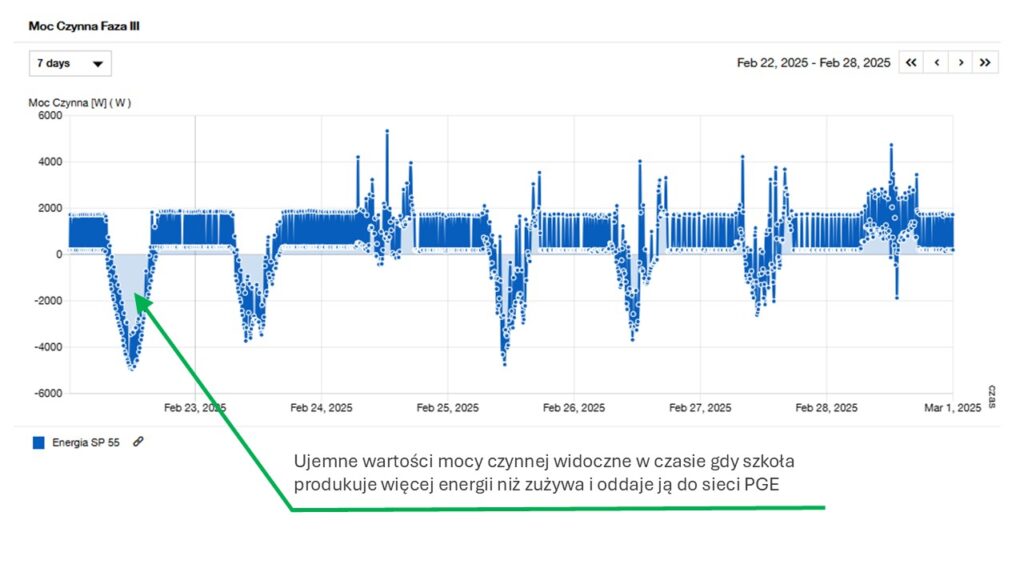
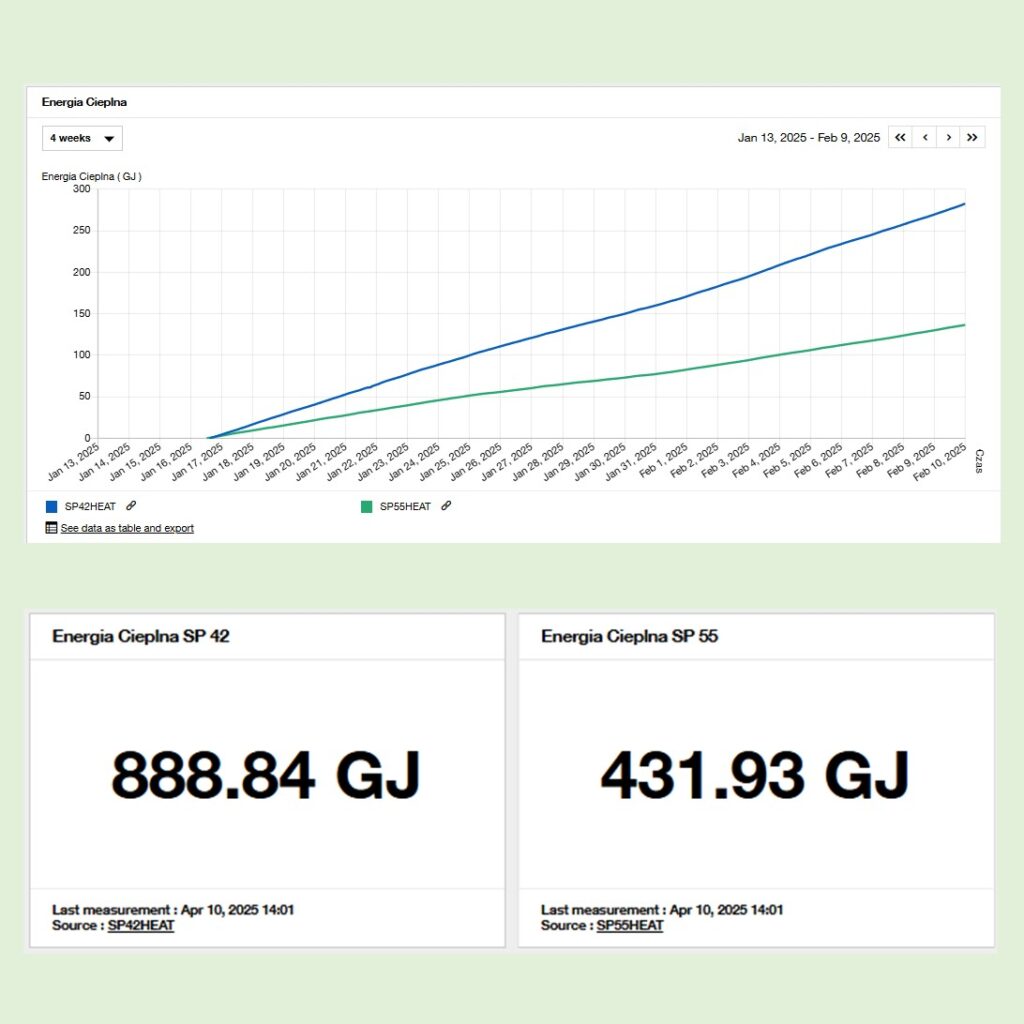
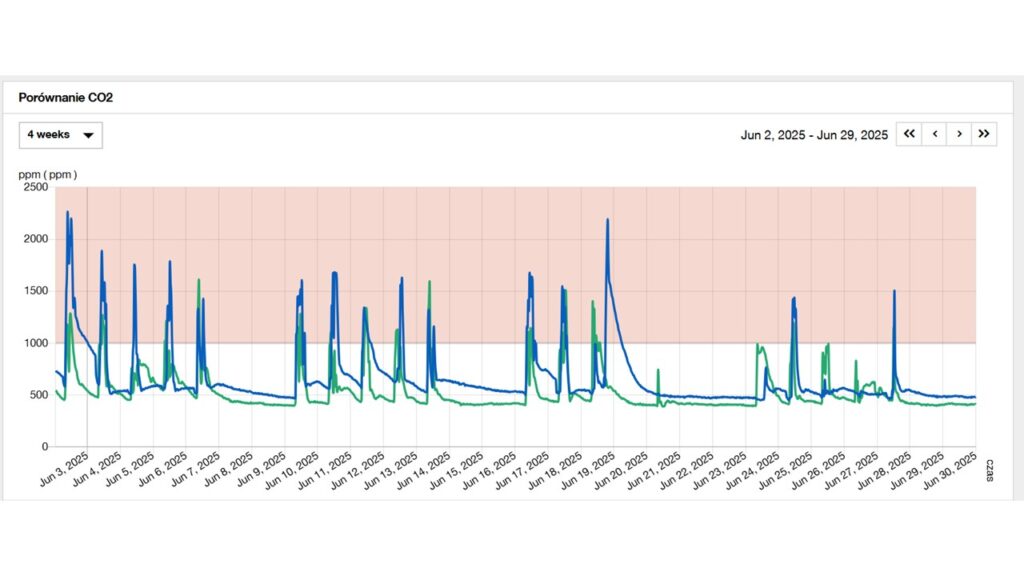
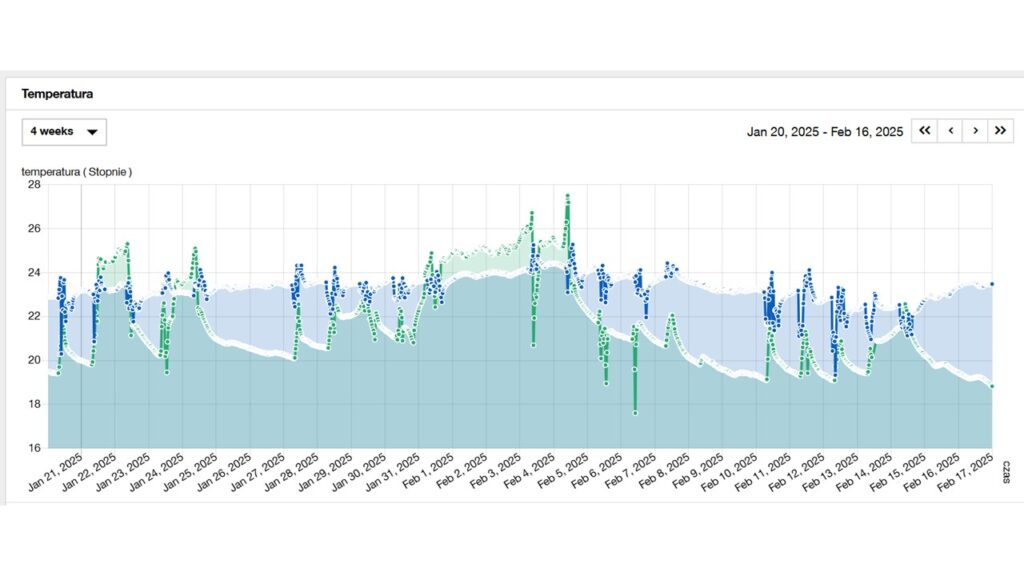
Why is it worth implementing metering
Metering of public administration buildings is not just a technical addition. It is the foundation that allows you to manage facilities consciously – based on facts and data, not intuition or
estimates.
Thanks to the system, it is possible to:
- Better energy use – both the one purchased from the grid and the one produced locally, e.g. from photovoltaic installations. Real-time data allows you to minimize losses, choose the most advantageous tariffs and reduce costs related to reactive energy.
- Control over utility costs – Ongoing monitoring of electricity, heat and water gives full transparency of settlements and eliminates unexpected increases in bills.
- Improving the user experience – Air quality data allows you to react quickly in situations where conditions could reduce concentration and comfort at work. In the long run, it is also the knowledge needed to make decisions about ventilation or filtration modernizations.
- Security and business continuity – The system can detect irregularities that
remain invisible in the classic model – such as micro-water leaks or too high reactive
energy levels.
Metering is therefore not only about savings, but also about a real improvement in the quality of functioning of public buildings. It is a tool that supports local governments and administrators in their daily management, and at the same time creates conditions conducive to the health and efficiency of people using the facilities.
Implementation and maintenance costs
The implementation of a metering system is an investment that quickly begins to pay off. The cost includes not only the installation of the measuring devices itself, but also the integration of all data sources in one environment, access to analytical panels and preparation of the facility for further optimization. As a result, the manager receives a complete set of tools – from monitoring utility consumption to reports to facilitate decision-making.
System maintenance, in turn, means constant access to support, updates and real-time data analysis. The annual cost includes maintenance, sensor service and ensuring the continuity of system operation. In practice, this is a small expense compared to the savings that occur thanks to better management of energy, water and heat.
Summarizing:
- Cost of implementation: starting with 6000 euro net (depending on the scale of the
facility) - Cost of annual maintenance: 2 000 euro net
Summary
Metering of public administration buildings is a step that opens the way to real savings, conscious media management and improvement of working or learning conditions. It is a tool that has already been implemented in practice – and which has shown that data collected in real time can become the foundation for better functioning of public institutions. The results of the projects carried out so far confirm that investing in a metering system is not only about reducing energy and water costs, but also about improving air quality and comfort for people using the facility. It is a solution that supports local governments and administrators in creating economical, modern and healthy spaces. If you want to learn more or check how such a system could work in your building – please contact us.
